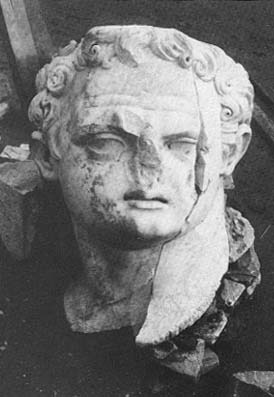Image Details

Austrian Archaeological Institute
The Emperor Titus. This head and an arm (not shown) of Titus are the surviving pieces of the only sculpture to have been recovered from the Sebastoi temple. When first discovered, the statue was identified as Domitian, Titus’ younger brother and his successor as emperor. More recent research has shown the face to be Titus, but executed in an idealized style rather than according to the official Roman portrait style. Only the statue’s head and extremities were made of stone; the body was wooden and has not survived. A large groove in the back of the head, made to reduce the weight of the statue, indicates that the statue was probably set in front of a wall, where the groove would not have been visible to viewers. In its original state, the statue measured about 25 feet tall.
Titus completed the task begun by his father Vespasian—suppressing the First Jewish Revolt against Rome (66–70 C.E.) with the burning of Jerusalem and the destruction of the Temple. The Arch of Titus in Rome, bearing scenes of Roman soldiers carrying away ritual objects from the Jerusalem Temple, celebrates Titus’ triumph.
